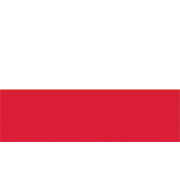Fiscal subject related
Few days ago, the Sejm passed a bill introducing a mandatory National e-Invoice System (KSeF) for taxpayers in Poland. The law will be implemented in stages beginning in 2026.
Implementation Timeline:
· February 1, 2026: Large businesses with over PLN 200 million in 2024 sales must begin using e-invoices.
· April 1, 2026: All remaining entrepreneurs are required to comply.
· January 1, 2027: Small businesses with monthly sales up to PLN 10,000 will join.
Until the end of 2026, businesses can continue using traditional cash registers for invoicing. Penalties for invoicing errors and mandatory KSeF reference numbers in bank transfers will also be delayed during this phase. One of the key features of the new bill is a faster VAT refund process. The standard deadline will be reduced from 60 days to 40 days, helping companies manage their cash flow more efficiently.
Other news from Poland
Poland Sets 2027 Deadline: Simplified Invoices Must Move from Cash Registers to KSeF
 Poland
Author: Nikolina Basić
Poland
Author: Nikolina Basić
Poland will temporarily allow simplified invoices issued from cash registers—including receipts with a buyer’s NIP—to remain outside the mandatory KSeF system until 31 December 2026. Starting 1 January 2027, all simplified invoices must be issued through KSeF, ending the option to generate them directly from cash registers. The introduction of the National e-Invoicing System (KSeF) in Poland is co... Read more



Pro Forma Invoices and E-invoicing: what changes after February 1, 2026?
 Poland
Author: Nikolina Basić
Poland
Author: Nikolina Basić
Pro forma invoices will continue to be allowed as non-tax, purely informational business documents, but they will not be issued or processed in KSeF because they are not recognized as invoices under the VAT Act. From 2026 onwards, only legally defined VAT invoices will pass through KSeF, while pro formas may still be shared externally (PDF, email, systems) as offer or preview documents. For many y... Read more



New document was uploaded: S4F backoffice installer
S4F backoffice installer is intended for users who are installing the software for the first time. Please make sure to obtain latest version of installer and to apply all subsequent patches that are released subsequently. This package contains instruction, release notes, changelog and software packages required for deployment of this software component. This version of the Backoffice installer supports the following countries: Austria, Bulgaria, Croatia, France, Italy, Poland, Portugal, Romania, Slovakia and Slovenia. Read more
Subscribe to get access to the latest news, documents, webinars and educations.
Already subscriber? Login


Ministry of Finance of Poland Launched Demo of KSeF 2.0 Taxpayer Application
 Poland
Author: Nikolina Basić
Poland
Author: Nikolina Basić
On November 15, 2025, the Polish Ministry of Finance released the KSeF 2.0 Taxpayer Application demo for testing before its February 1, 2026, launch. Users can issue and manage invoices in a simulated environment. On November 15, 2025, the pre-production environment (Demo) of the KSeF 2.0 Taxpayer Application was made available by Polish Ministry of Finance. The demo version allows users to test t... Read more



Poland prepares for Mandatory B2B E-Invoicing with new KSeF Tools- Certificates and Authorizations Module (MCU)
 Poland
Author: Nikolina Basić
Poland
Author: Nikolina Basić
Starting February 1, 2026, Poland mandates B2B invoicing via the National e-Invoice System (KSeF). To support this, the Ministry of Finance released key tools, including the MCU for managing access and digital certificates, which are essential for KSeF 2.0 access. Starting February 1, 2026, Poland will require businesses to use the National e-Invoice System (KSeF) for B2B invoicing. To help compan... Read more



E-invoicing in Poland: Ministry of Finance launches demo version of KSeF 2.0 API
 Poland
Author: Nikolina Basić
Poland
Author: Nikolina Basić
Poland’s Ministry of Finance has launched the pre-production (Demo) environment for the new KSeF 2.0 API, enabling businesses and software providers to test integrations under real authentication conditions. The demo, accessible at ksef-demo.mf.gov.pl, mirrors live system functionality without legal effects, supporting companies in preparing for mandatory e-invoicing rollout The Ministry of Financ... Read more



Regulation update in Poland: expansion of software-based cash registers
 Poland
Author: Nikolina Basić
Poland
Author: Nikolina Basić
Poland has expanded the scope of businesses eligible to use software-based cash registers under amendments effective April 1, 2026. The updated regulation adds sectors such as car washes, automated delivery systems, self-service ticketing, and electronic parking services, further advancing the country’s digital tax infrastructure modernization Poland’s authorities have officially published a... Read more


